Rose of Sharon Hibiscus syriacus Pinky Spot = 'Minspot' (PBR)
![rose of Sharon [Pink Spot]](/_next/image?url=https%3A%2F%2Fplants-admin.emdemapps.com%2Fimages%2Fplants%2F%2Fimages%2F604b61d15eb8a.png&w=3840&q=75)
ABOUT
The Hibiscus syriacus, commonly known as the Rose of Sharon or Shrub Althea, 'Pinky Spot' variety, showcases eye-catching flowers that are a visual delight. This particular cultivar blooms with large, showy blossoms that draw attention in any garden setting. The flowers exhibit a gorgeous shade of light pink, providing a soft yet elegant color palette. Adding distinction to their appearance, each petal is adorned with a prominent deep red or burgundy center, creating a 'spot' that stands out against the softer pink hues. This creates an attractive, two-tone effect which is quite striking. The abundance of petals unfurl to reveal a ruffled, almost billowy texture, contributing to the plant's ornamental value. The foliage of the 'Pinky Spot' consists of rich green leaves that create a lush backdrop and enhance the vibrant flower display. Their shape is typically oval, sometimes with subtly serrated edges, which echoes the typical form of the Rose of Sharon varieties. These leaves often have a leathery texture and appear glossy, which contrasts beautifully with the silky quality of the petals. The plant itself is a deciduous shrub that is recognized for its upright, vase-shaped growth habit. Over the seasons, the 'Pinky Spot' transforms, going from a profusion of green leaves and pink flowers during its blooming period to a more subdued presence in the colder months when it sheds its foliage. The shrub has a sturdy and resilient nature, capable of withstanding a variety of environmental conditions, which makes it a popular choice for gardens across different climates.
About this plant
 Names
NamesFamily
Malvaceae.
Synonyms
Rose of Sharon, Shrub Althea, Hardy Hibiscus, Syrian Ketmia.
Common names
Hibiscus syriacus 'Minspot'
 Toxicity
ToxicityTo humans
Rose of Sharon is generally considered to be non-toxic to humans. It does not normally cause poisoning or adverse reactions when touched or ingested. However, as with any plant, individual reactions can vary, and it's always best to avoid ingesting plant parts unless they are known to be edible.
To pets
Rose of Sharon is not considered highly toxic to pets, but consumption of the plant, particularly in larger quantities, can potentially lead to gastrointestinal upset in some animals. Symptoms could include vomiting, diarrhea, and loss of appetite. If your pet displays symptoms after consuming part of the plant, it is advisable to consult with a veterinarian.
 Characteristics
CharacteristicsLife cycle
Perennials
Foliage type
Deciduous
Color of leaves
Green
Flower color
Pink
Height
8-12 feet (2.4-3.7 meters)
Spread
4-6 feet (1.2-1.8 meters)
Plant type
Shrub
Hardiness zones
5
Native area
Asia
Benefits
 General Benefits
General Benefits- Ornamental Appeal: Provides aesthetic beauty to gardens with its prominent pink-spotted blooms.
- Hardy Nature: Thrives in a range of soil conditions and tolerates urban pollution and heat.
- Low Maintenance: Requires minimal care once established, making it suitable for novice gardeners.
- Long Flowering Period: Offers an extended bloom period from mid-summer to early fall.
- Drought Resistance: Can survive in dry conditions once established, reducing the need for frequent watering.
- Attracts Pollinators: Flowers attract bees, butterflies, and other beneficial insects, supporting biodiversity.
- Privacy Screen: When planted in groups, creates a natural privacy barrier or hedge.
- Urban-Tolerant: Suitable for city environments, as it handles pollution and confined spaces well.
- Versatile Landscaping: Can be used in mixed borders, as a specimen plant, or in container gardens.
- Non-Invasive: Unlike some other species, it does not aggressively spread and is easy to manage.
 Medical Properties
Medical PropertiesThis plant is not used for medical purposes.
 Air-purifying Qualities
Air-purifying QualitiesThis plant is not specifically known for air purifying qualities.
 Other Uses
Other Uses- Paper Making: The fibrous nature of Hibiscus syriacus' stems and bark can be utilized in crafting handmade papers.
- Ingredient in Jams: The flowers of the Rose of Sharon can be used to make a floral-flavored jam or jelly.
- Natural Fabric Dye: The flowers and leaves may produce natural dyes for coloring fabrics with soft hues.
- Beverage Garnishes: The vibrant flowers can be used to garnish cocktails or fancy drinks, adding an exotic touch.
- Culinary Decoration: Edible flowers of the Rose of Sharon can be used to decorate salads or desserts for an elegant presentation.
- Craft Material: Dried flowers can be incorporated into crafts such as potpourri, sachets, and decorative wreaths.
- Floral Ice Cubes: Blossoms frozen in ice cubes can add a decorative element to punch bowls or individual drinks.
- Tattoo Inspiration: The distinct form and color of the flowers provide inspiration for botanical tattoo designs.
- Landscape Design: Can be trained into a small, deciduous tree for an architectural feature in gardens.
- Photography Subject: The Rose of Sharon's beautiful blooms are a favorite subject for garden photographers and artists.
Interesting Facts
 Feng Shui
Feng ShuiThe Rose of Sharon is not used in Feng Shui practice.
 Zodiac Sign Compitability
Zodiac Sign CompitabilityThe Rose of Sharon is not used in astrology practice.
 Plant Symbolism
Plant Symbolism- Delicate Beauty: The Hibiscus syriacus, commonly known as Rose of Sharon, often symbolizes delicate beauty due to its large, showy blossoms that exhibit a gentle appearance.
- Feminine Energy: With its soft pink hues, the Rose of Sharon is sometimes associated with the essence of femininity, representing nurturing and soft energy often attributed to the female aspect.
- New Beginnings: As a plant that blooms later in the summer, the Rose of Sharon can symbolize new beginnings or starting afresh, as it brings a second wave of beauty and color when many other plants have finished their bloom cycle.
- Love & Affection: Many hibiscus varieties are used to convey feelings of love and affection, and the Rose of Sharon specifically carries this symbolism in the language of flowers, sometimes given to show the giver's deep interest or as an emblem of a budding romance.
- Overcoming Challenges: The Rose of Sharon's ability to withstand harsh conditions and still produce beautiful flowers is seen as a metaphor for the human spirit's capacity to overcome challenges and adversities.
 Water
WaterThe Rose of Sharon requires watering that penetrates deeply into the soil to encourage strong root development. Typically, during the growing season, water the plant deeply once a week, ensuring that the plant receives about 1.5 gallons of water each time. This frequency should be adjusted according to weather conditions, with more water provided during hot, dry periods and less during cooler, rainy spells. Overhead irrigation should be avoided as it can lead to leaf diseases; instead, water at the base of the plant. During winter, water sparingly, only ensuring that the soil does not completely dry out.
 Light
LightThe Rose of Sharon thrives in full sun to partial shade. It performs best with at least six hours of direct sunlight per day, but can tolerate some light shade, especially in hotter climates. The ideal spot for the Rose of Sharon would be an area where it can receive unfiltered sunlight for most of the day, ensuring robust flowering and healthy growth.
 Temperature
TemperatureThe Rose of Sharon is relatively hardy, tolerating temperatures down to around 20 degrees Fahrenheit, but it thrives in the 60 to 90 degrees Fahrenheit range. The plant can withstand brief temperature spikes above this range but should be shaded and watered more frequently during such periods. The ideal temperature for vigorous growth and bloom production is a consistent, warm temperature within the 70 to 85 degrees Fahrenheit range.
 Pruning
PruningPruning the Rose of Sharon helps to maintain its shape and encourage more profuse blooming. Prune in late winter or early spring before new growth starts, cutting back last year's growth to two or three buds per stem. This not only encourages the development of new wood, where flowers emerge, but also helps in preventing disease and overcrowding. Annual pruning will also rejuvenate older shrubs.
 Cleaning
CleaningAs needed
 Soil
SoilThe Rose of Sharon prefers well-draining, loamy soil enriched with organic matter. A pH range of 6.0 to 7.5 is ideal for optimal growth.
 Repotting
RepottingRose of Sharon is typically grown outdoors and doesn't require frequent repotting. If potted, repot every 2-3 years to refresh the soil.
 Humidity & Misting
Humidity & MistingRose of Sharon thrives in average outdoor humidity levels and does not require specific humidity conditions.
 Suitable locations
Suitable locationsIndoor
Keep in bright light, prune for shape, water moderately.
Outdoor
Plant in full sun, ensure well-drained soil, space adequately.
Hardiness zone
5-9 USDA
 Life cycle
Life cycleHibiscus syriacus Pinky Spot begins life as a seed, typically requiring a period of stratification—cold treatment—to break dormancy and encourage germination. Upon germination in spring, the seedling develops a root system and foliage, entering a period of rapid vegetative growth. As the plant matures, it begins to form buds in the late spring to early summer which will develop into its distinctive pink-spotted flowers by mid to late summer. After pollination, often facilitated by insects, the flowers give way to seed pods which mature in late summer to early autumn, completing the reproductive cycle. The plant becomes dormant in winter, with leaves falling as it enters a period of rest, only to resume growth the following spring. This life cycle continues annually, with the shrub potentially living for several decades under optimal conditions.
 Propogation
PropogationPropogation time
Spring-Early Summer
The Hibiscus syriacus, commonly known as Rose of Sharon, can be propagated most effectively through softwood cuttings. The ideal time for this method is in late spring or early summer when the new growth is still flexible. To propagate, one should select a healthy branch and cut a section approximately 4 to 6 inches (about 10 to 15 centimeters) in length, making sure it includes at least two sets of leaves. The bottom set of leaves should be removed, and the cut end may be dipped in rooting hormone powder to enhance root development. The cutting should then be planted in a mix of moistened potting soil and perlite, ensuring the remaining leaves are above the soil surface. The container with the cutting should be placed in a warm, well-lit area but not in direct sunlight, and covered with a plastic bag to retain humidity until roots have established, which typically takes several weeks. Once rooted, the cuttings can be transplanted to their permanent location.
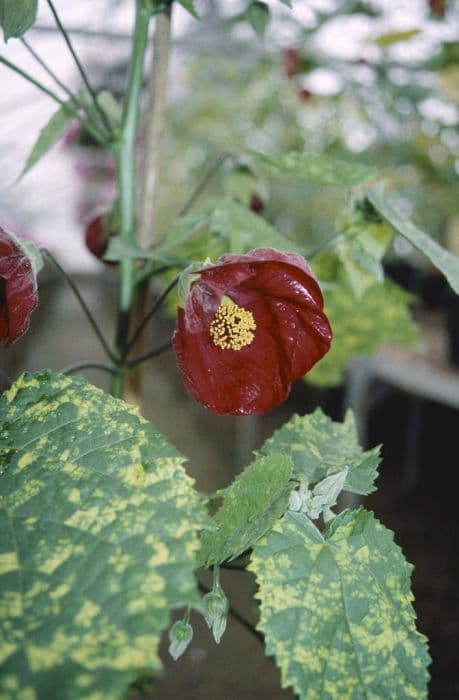
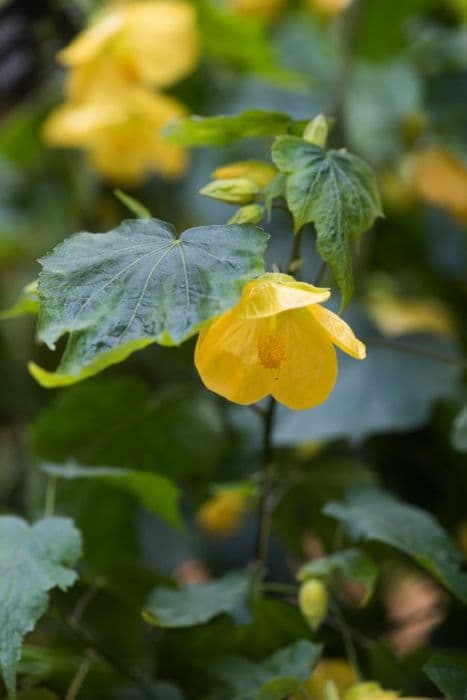
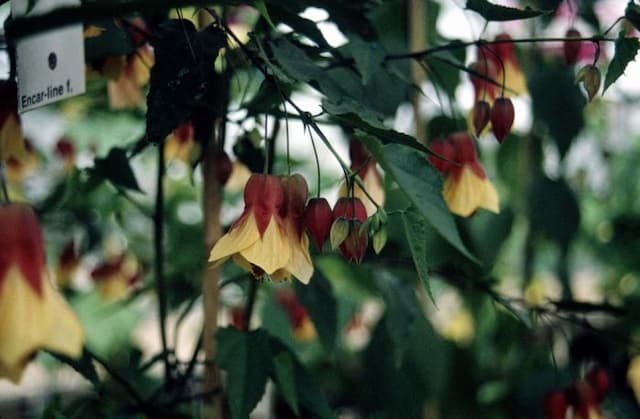
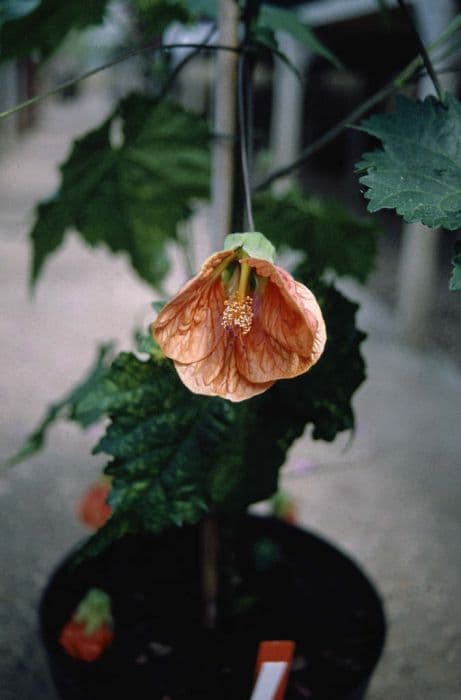
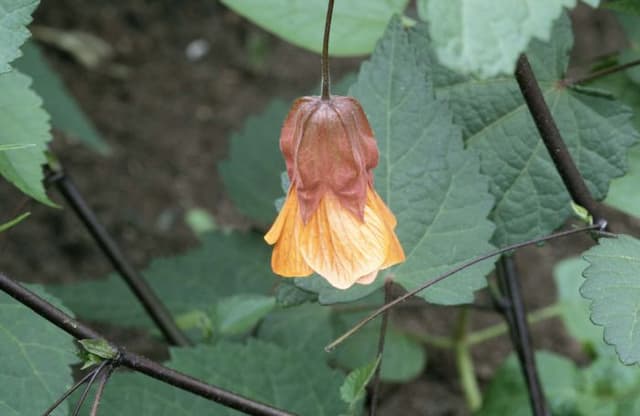

![Abutilon [Yellow Trumpet]](/_next/image?url=https%3A%2F%2Fplants-admin.emdemapps.com%2Fimages%2Fplants%2F%2Fimages%2F604b5caa8b4fb.png&w=640&q=75)

